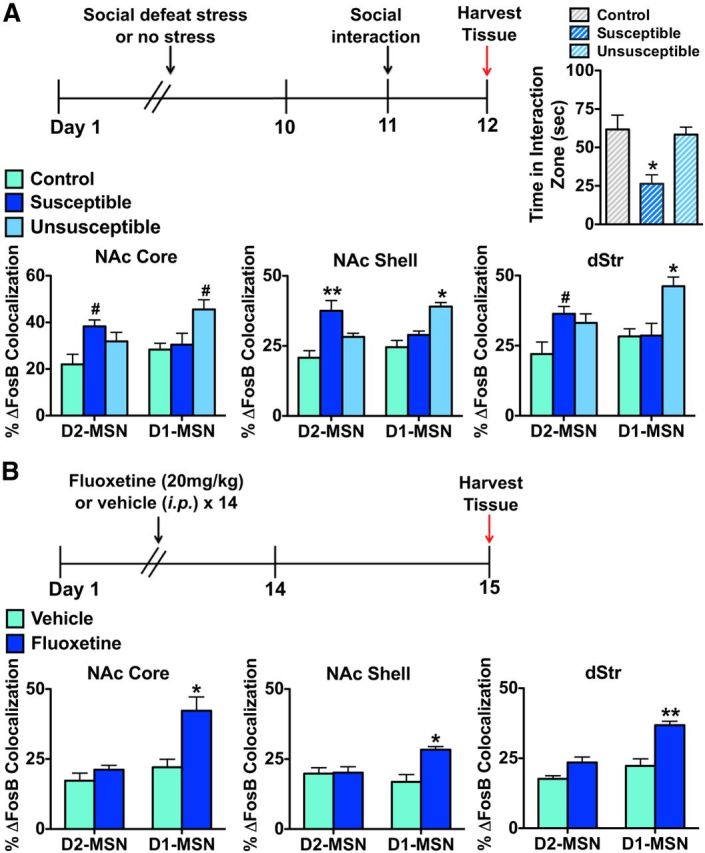Figure 6.

Chronic social defeat stress and chronic fluoxetine cause ΔFosB induction in distinct MSN subtypes in striatum. A, D2-GFP that are susceptible to a 10 d course of social defeat stress exhibit ΔFosB induction in D2-MSNs in all striatal regions, 48 h after the last defeat episode and 24 h after the social interaction test, compared with control mice or mice that are resilient to 10 d of social defeat stress. Resilient D2-GFP mice exhibit induction of ΔFosB in D1-MSNs in all striatal regions, 48 h after the last defeat episode, compared with control or susceptible mice. Two-way ANOVA, NAc core: group × cell type F(1,20) = 20.11, p < 0.05, Bonferroni post test: D2-MSN/susceptible #p < 0.05, D1-MSN/resilient; #p < 0.05; NAc shell: group × cell type F(1,20) = 27.79, p < 0.01, Bonferroni post test: D2-MSN/susceptible; **p < 0.001, D1-MSN/resilient; *p < 0.01; dStr: group × cell type F(1,20) = 19.76, p < 0.01, Bonferroni post test: D2-MSN/susceptible; #p < 0.05, D1-MSN/resilient; *p < 0.01. B, D2-GFP mice receiving chronic treatment of the fluoxetine (20 mg/kg, i.p.), for 2 weeks with mice examined 24 h after the last treatment, exhibit a significant induction of ΔFosB in D1-MSNs in all striatal regions. Two-way ANOVA, NAc core: drug × cell type F(1,10) = 14.59, p < 0.05, Bonferroni post test: *p < 0.01; NAc shell: drug × cell type: F(1,10) = 26.14, p < 0.05, Bonferroni post test: *p < 0.01; dStr: drug × cell type F(1,10) = 8.19, p < 0.05, Bonferroni post test: **p < 0.001.
